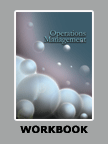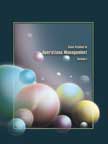SCM and ERP Software Implementation at Nike: From Failure to Success




|
|
ICMR HOME | Case Studies Collection
Case Details:
Case Code : OPER049
Case Length : 18 Pages
Period : 1996 - 2005
Organization : Nike
Pub Date : 2005
Teaching Note : Available
Countries : United States Industry : Footwear & Apparels
To download SCM and ERP Software Implementation at Nike: From Failure to
Success case study
(Case Code: OPER049) click on the button below, and select the case from the list of available cases:

Price:
For delivery in electronic format: Rs. 500;
For delivery through courier (within India): Rs. 500 + Rs. 25 for Shipping & Handling Charges
» Operations Case Studies
» Case Studies Collection
» ICMR HOME
» View Detailed Pricing Info
» How To Order This Case
» Business Case Studies
» Case Studies by Area
» Case Studies by Industry
» Case Studies by Company
Please note:
This case study was compiled from published sources, and is intended to be used as a basis for class discussion. It is not intended to illustrate either effective or ineffective handling of a management situation. Nor is it a primary information source.
|
|
<< Previous
Introduction Contd...
|
An AMR Research5 survey of 110 companies
of annual revenues of $500 million or more using ERP revealed that only 23% had
adopted a single instance strategy while 36% were planning to put it in place,
while another 17% were trying to get the instances down to one per major global
region and were investing considerable funds to achieve this.
Analysts
acknowledged that Nike had indeed taken a bold step when it adopted the single
instance strategy with its first ERP rollout. During the late 1990s, most
companies avoided it due to its huge costs and bandwidth problems. Christopher
Koch, Executive Editor, CIO Magazine, remarked, "If it was easy, everyone would
just do it."6
|
|
Nike's Supply Chain
Founded in 1957 by Philip Knight (Knight), Nike manufactures high quality
athletic shoes for a variety of sports including baseball, athletics, golf,
tennis, volleyball and wrestling. In addition to footwear, Nike also
manufactures fitness equipments, apparels and accessory products. The
company's products are sold in over 140 countries around the world.
|
|
All product development factory contracting and marketing activities were
carried out at the company's headquarters in Beaverton, Oregon in the US.
Nike's global operations were broadly divided into five geographic regions –
United States; Europe, Middle East and Africa (EMEA); Asia Pacific and
Americas (includes Canada, Mexico and other Latin American countries of
Chile, Brazil and Argentina).
Since the mid-1970s, Nike has outsourced its manufacturing activities. The
company's products were manufactured in factories owned and operated by its
business partners commonly known as contractors around the globe. |
In 1975, Nike introduced the Futures program to manage the
market for its footwear products. Under this program, Nike's retailers placed
orders with the company six months before the required delivery date with the
guarantee that 90 percent of their orders would be delivered within a set time
period at a fixed price. These orders were then forwarded to the manufacturing
units around the world...
Excerpts >>
|
|



